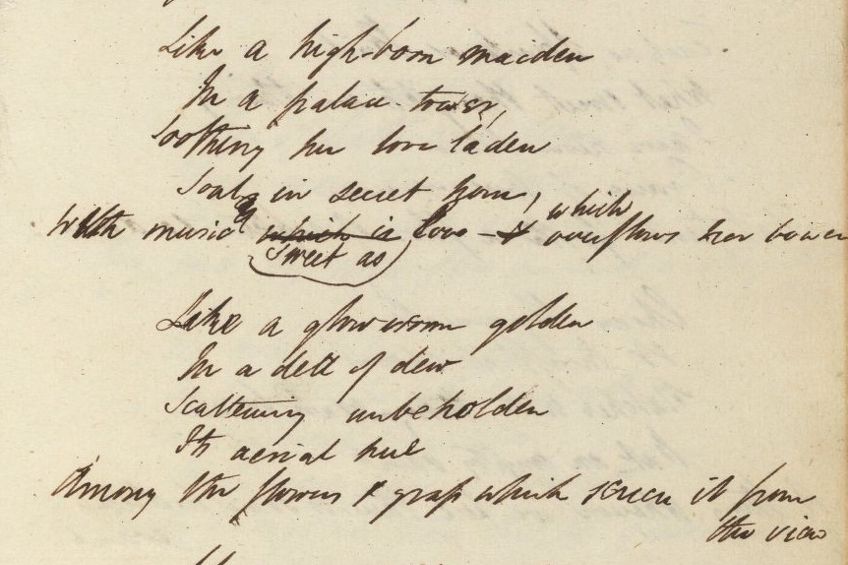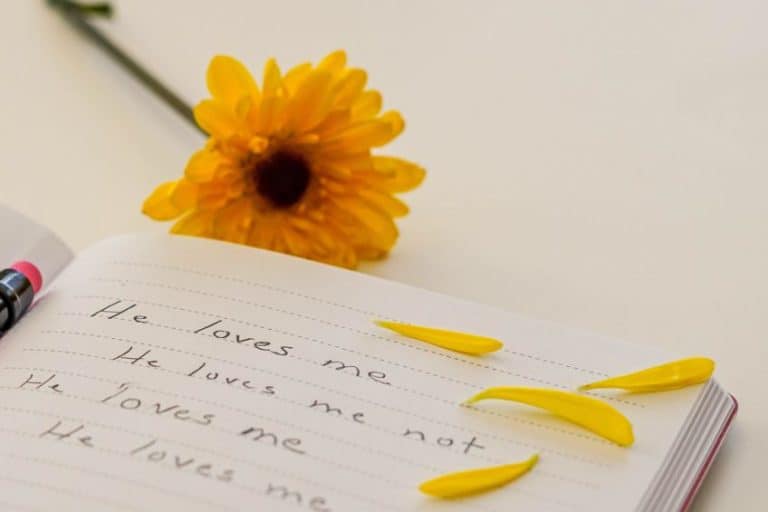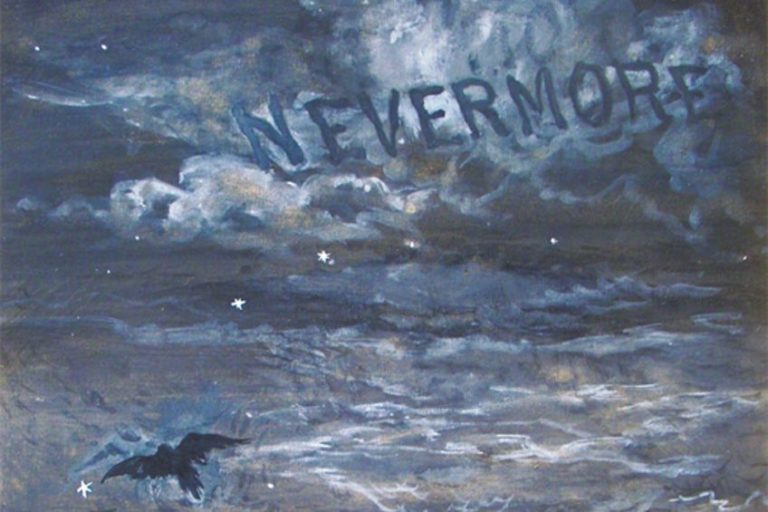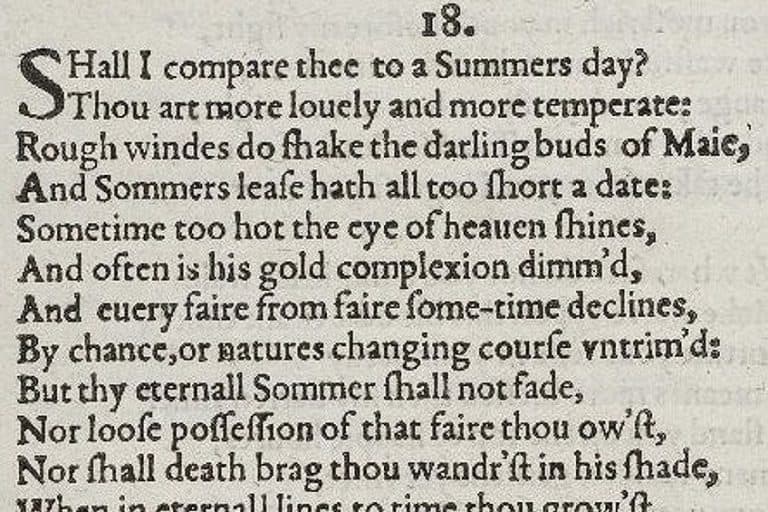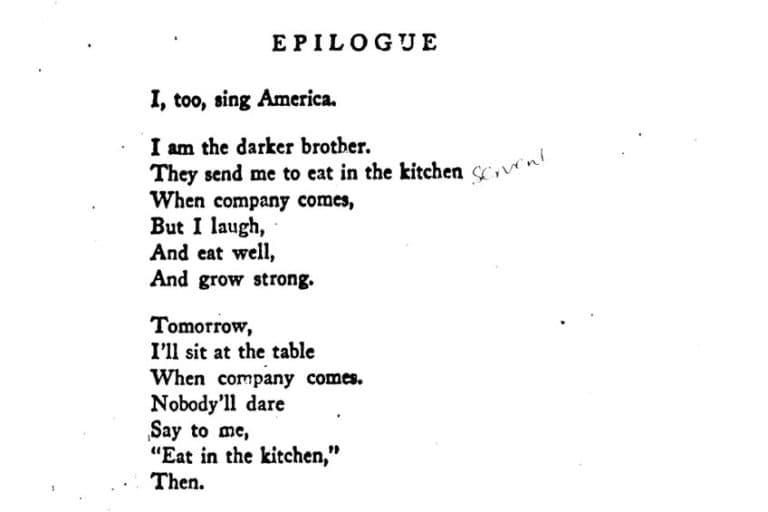What Is an Ode Poem? – An In-Depth Look at the Ode Form
What is an ode poem? This ancient form of poetry is what we will be discussing today as we examine the history of this long-lived poem variety, some of the primary ode characteristics, the different types of ode poetry, some famous poets who have made use of this form, and a number of ode poem examples. If this sounds like something worth your time, let’s have a look at ode poetry and what makes it so special.
Table of Contents
What Is an Ode Poem?
There are many types of poems in the world, and it can be easy to see a poem as a poem, especially when it does not have a very specific structure to it, like a sonnet. However, ode poetry is some of the oldest in existence as it has been around since the time of the ancient Greeks. This ancient poetic form is a type of lyrical poetry that is written as some kind of a celebration or praiseworthy thing.
The celebration or praiseworthy object that an ode commemorates can be anything. It could be a person, an animal, an inanimate object of some variety, or it could even be something as nebulous as an idea. There are no real rules to what the topic of an ode has to be, and this allows the ode to be quite malleable.

In ancient times, the ode was usually performed publicly, but that is not necessarily the case for something to be considered an ode poem in the modern day. However, the ode is also a highly variable type of poem because it can have any length, form, and so on. Although, once it does establish a form, it generally follows that form, and so ode poems are not very often in the realm of free verse as they are often written with more musicality in mind. This is what we will examine today as there are many different aspects of ode poetry that are worth discussing.
Firstly, it is likely best to examine what exactly the history of this form is, because while the ode may not be as prominent today as it used to be, it is still an immensely old and influential form of poetry.
The History of Ode Poetry
The earliest origins of ode poetry place it in ancient Greece. The early ode poets used this form as a public performance. These performances were often to celebrate victories of various kinds, and they were accompanied by dance and music. Some of the earliest instances of ode poetry are as early as the 7th century BCE. Odes would become a common sight in instances of Greek drama throughout the existence of this ancient civilization.
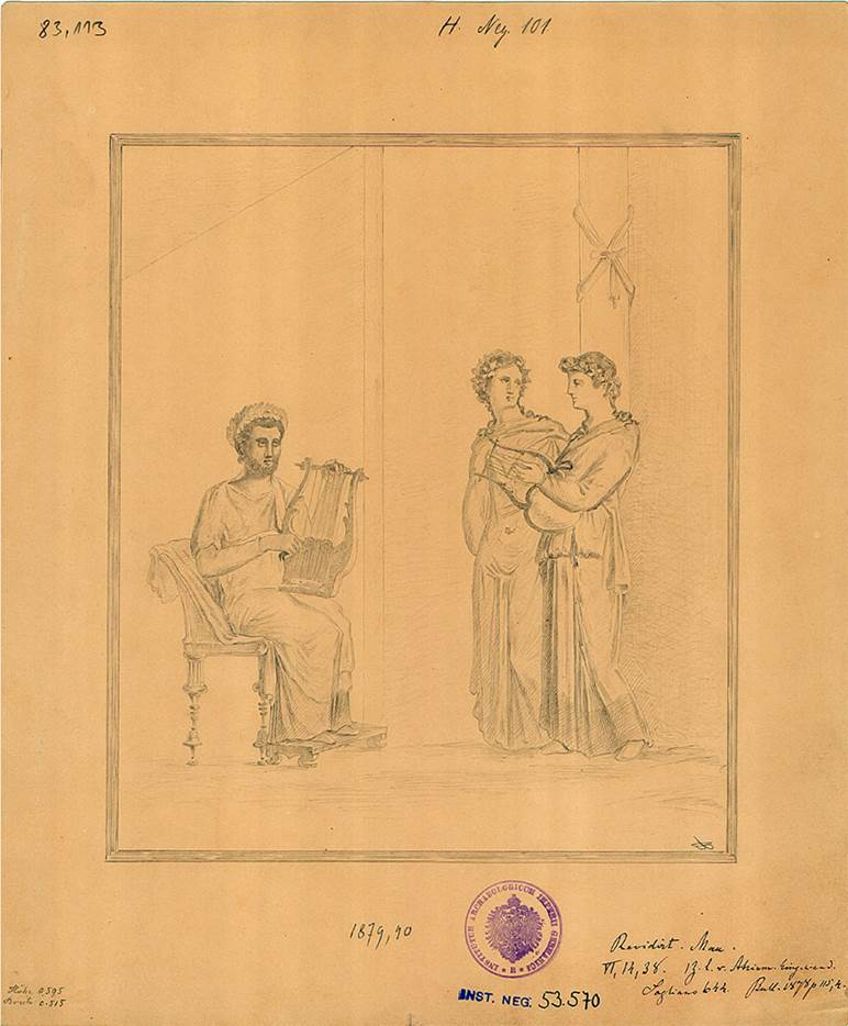
However, the ode would continue into the Renaissance, which is where it reached its height. This period of time was marked by an attempt to return to and learn from Classical sources. This led to a massive uptick in the composition of both Pindaric and Horatian odes. They would dwindle in popularity as time continued, but their influence can still be felt into the modern day.
However, some aspects of the ode are a little different in contemporary examples of the form as the term has come to be more of a catchall term rather than a highly specified one. An ode, because of its praiseworthy nature, has been adopted over a variety of different poetic styles and forms and, as such, it is not as formalized as it used to be.
This has not stopped the creation of ode poetry, but simply the adaptation of it to contemporary sensibilities.
Common Ode Characteristics
The most basic element of an ode poem is its more celebratory nature. This is the aspect of the ode that most distinguishes it from other types of poetry. In its original incarnation in ancient Greece, these poems were generally performed. For this reason, they would often make use of a more musical quality to their composition. When praising and celebrating something, it’s usually best to drop some of the solemn pretenses of some aspects of poetry and to instead ensure that the tone is understood by as many as possible.
However, an ode does not have a formalized rhyme scheme, metrical structure, or anything else that can be seen in some of the rigid forms. For instance, an ode poem is nothing like a sonnet. It does not have a highly enforced rhyme scheme or number of lines. However, that does not mean that there are not any common ode characteristics that are worth discussing in some or another way.

Many odes make use of highly descriptive language because they are trying to express positive feelings toward whatever it is that they are celebrating. There are no restrictions on what an ode poem can celebrate, and so it is not possible to narrow this down in any real way. That being said, once an ode poem has established a certain form, it is quite common for that form to be replicated and continued in some or another way. If a rhyme scheme or metrical structure of some kind, for instance, has been used in an ode poem, then it makes sense that an ode would continue to use that particular format that it has started. It is quite common for an ode, especially in the traditional sense, to be more formal in its general tone, but this is not a hard rule, and it can be broken by those who make use of this type of poetry.
The highly adaptable nature of the ode is something that has contributed to its longevity and the way in which it can be altered and changed depending on the specific needs of those who have decided to make use of it.
The Main Types of Odes
There are two major forms of ode poetry that can be traced back to the ancient Greek and Roman periods, and they have both managed to retain their form, to some extent, into the present day. These two forms are known as the Pindaric and Horatian odes, and they are named after the poets who made use of these forms.
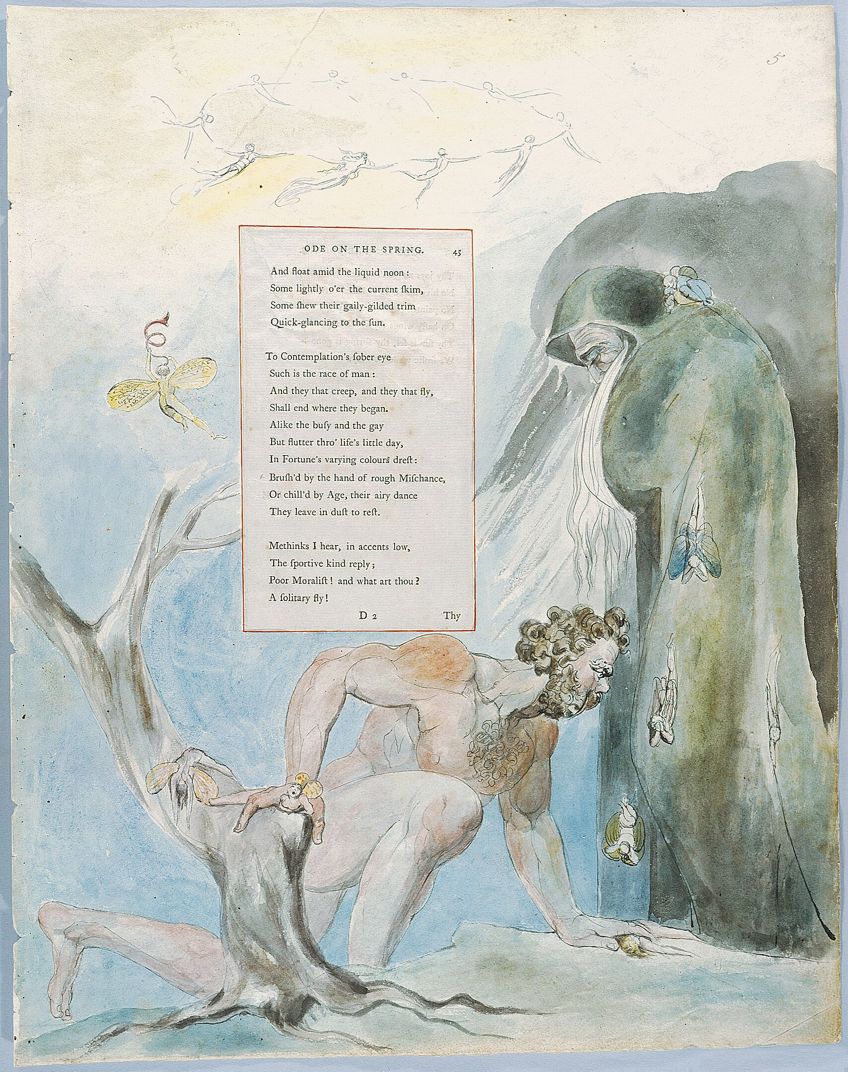
The Pindaric Ode
The ancient Greek poet Pindar wrote odes that could be performed by a variety of singers and dancers, and these odes were meant to serve as celebrations of major milestones in the history of the ancient Greek people. These poems were typically highly irregular in their general composition in terms of length, rhyme, and metrical arrangement. However, they were formalized around a three-part structure.
This three-part structure made use of a strophe, or repeated unit, an antistrophe, or a metrically harmonious section of the poem, followed by the epode, which made use of a different meter and served as a summary.
This structure allowed for a more musical quality to the poem in general. In ancient times, this particular type of poem had this arrangement as the performers moved from one side of the stage to the other. However, while the ancient Greek tradition in this particular case was not necessarily retained, as most poems are not performed in such a manner any longer, the form did see increased popularity in the Western world as a return to the ancient means of poetic composition during the Renaissance and Romantic periods, and many famous odes have made use of this style.
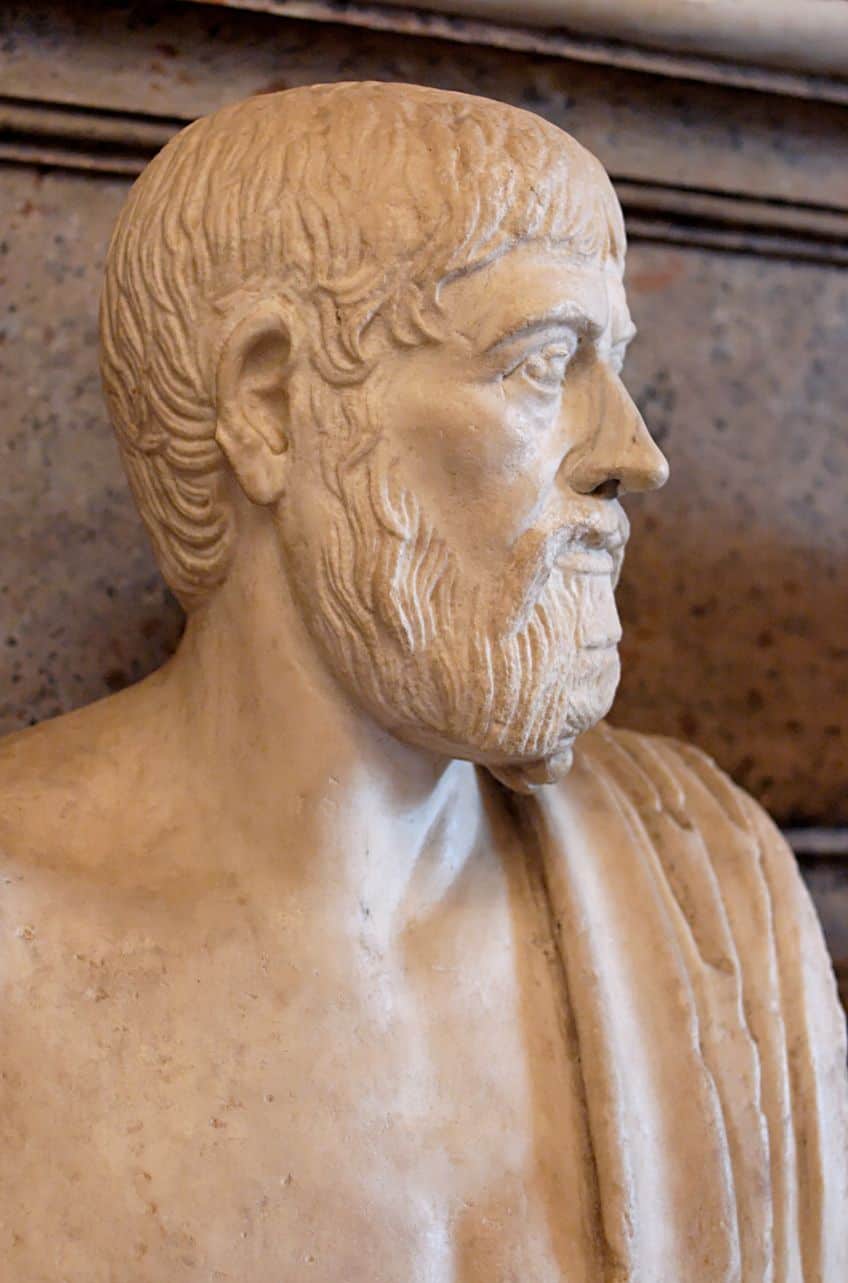
The Horatian Ode
The Horatian ode would come later, and it is named after the Latin poet, Horace. The idea of this particular type of ode is to produce a more calming tone than the one adopted in the Pindaric ode style. These poems are often concerned with ideas of love and peace. They are meant to be short and celebratory texts that do not mimic the kind of action that could be found in epics.
Many of these odes are instead quite intimate, and they attempt to reflect on something.
They are often addressed to those who are close to the poet in some or another sense, and they are usually only a few lines in length. Many do not exceed eight lines. However, that does not have to be a hard rule. Regardless of their shortness, the Horatian ode has remained an influential form of ode poetry into the present day, and many poets have been inspired by the work that can be found in poems of this variety. The dedication to love and passion is of special interest to those who wish to celebrate a person without the kind of excitement that may be found in some other poetic forms.

Famous Ode Poets
While there have been many poets over the years who have made use of ode poetry, we can only focus on a handful of them. Today, we will examine some of the Romantics because while they may not have been some of the oldest users of this particular poetic form, they have certainly remained some of the most influential users of ode poetry.
So, let’s examine some of the Romantic poets who wrote some of the most notable instances of ode poetry in the English language.
Samuel Taylor Coleridge (1772 – 1834) from Devonshire
| Literary Movement | Romanticism |
| Years | 1772 – 1834 |
| Place of Birth | Devonshire, United Kingdom |
| Known For | The Rime of the Ancient Mariner (1798) and Dejection: An Ode (1802) |
While many of the Romantics died relatively young, Samuel Taylor Coleridge managed to outlive many of those who would hold the mantle of the Romantic poet.

He is considered to be one of the most important and influential figures in the movement. He is known for his poetry, philosophy, and criticism. In fact, some of his work is seen as the originator of the Romantic movement, and so his influence cannot be overstated.
His poetry is noted for its musical qualities, and it can often be read or sung aloud thanks to this aspect of its general composition.
Percy Bysshe Shelley (1792 – 1822) from Field Place
| Literary Movement | Romanticism |
| Years | 1792 – 1822 |
| Place of Birth | Field Place, United Kingdom |
| Known For | Ozymandias (1818) and To a Skylark (1820) |
Percy Bysshe Shelley was an integral part of the Romantic movement and an important figure who was known for his pursuit of social justice and love, and in his life, he produced some of the most famous Romantic poems. His work was often inspired by the natural world, imagination, beauty, and other idealized topics. He is considered to be one of the quintessential Romantic poets.
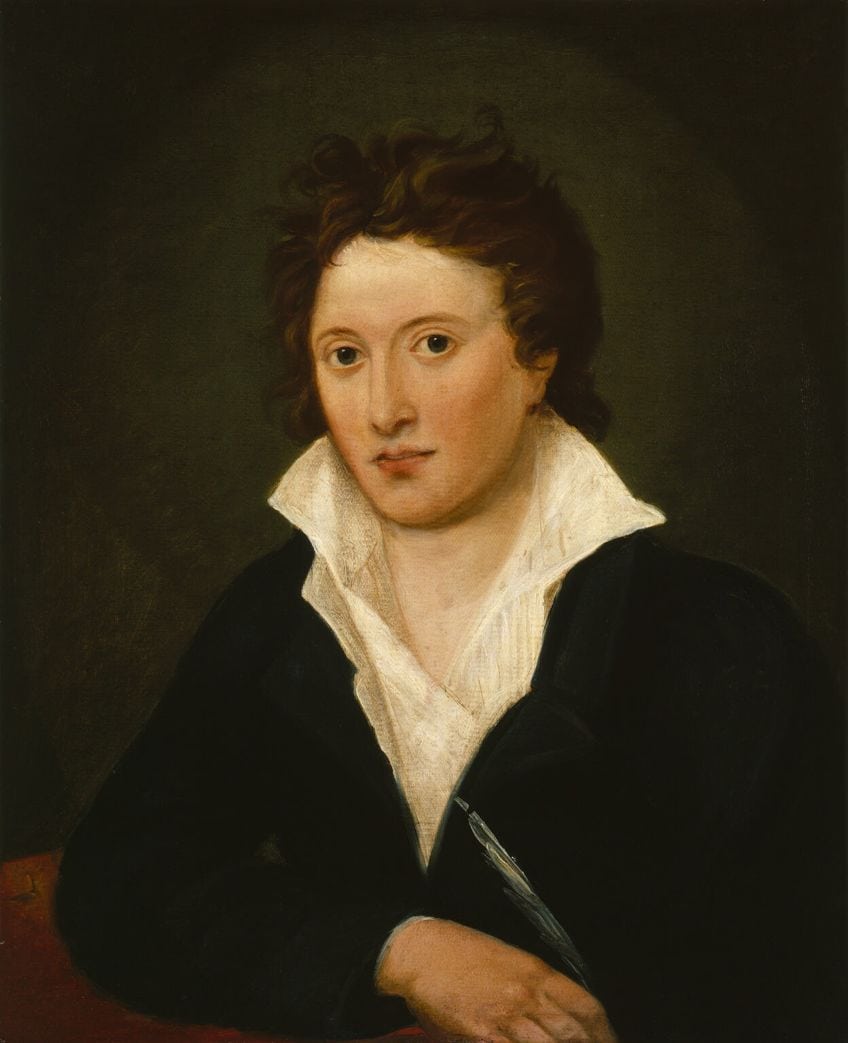
In addition, and as an interesting aside, he was also married to Mary Shelley. This writer was the daughter of Mary Wollstonecraft, the writer of the proto-feminist text, A Vindication of the Rights of Women (1792) as well as being an immensely important writer in the establishment of the science fiction genre. Mary Shelley is best known for writing Frankenstein (1818), and thanks to that, her fame has likely eclipsed her husband’s.
Although she is predominantly known for only one novel.
John Keats (1795 – 1821) from London
| Literary Movement | Romanticism |
| Years | 1795 – 1821 |
| Place of Birth | London, United Kingdom |
| Known For | Ode to a Grecian Urn (1819) and Ode to a Nightingale (1819) |
John Keats is considered to be one of the most important figures in the Romantic period. He is also considered to be one of those poets who burned bright but ultimately came to an end far earlier than he should have, as he died at the age of only 25. His poetry is often seen as some of the best, and he used extensive poetic devices throughout his work to produce a kind of poetic perfection that he sought to instill in the works that he produced.

A Few Notable Ode Poem Examples
Let’s have a look at a few ode poem examples that exemplify some of the ode characteristics that have been discussed above. However, it should be noted that like the section above, we will focus on some of those who led something of a resurgence in ode poetry: the Romantics. These figures may not have been the originators of ode poetry, but their goals and aims with regard to their art are often paralleled in the kind of tone that an ode is able to provide to a reader.
So, let’s have a look at a few ode poem examples from these figures during this highly influential period of literature.
Dejection: An Ode (1802) by Samuel Taylor Coleridge
| Date Published | 1802 |
| Type of Poem | Ode |
| Rhyme Scheme | ABAB (then variable) |
| Meter | Variable |
| Topic | Despair |
One of the most famous ode poems from the Romantic era came from the work of Samuel Taylor Coleridge. This particular poem is an examination and discussion of despair. This is a fairly unusual thing for an ode to explore, as they are often meant to be an exploration of some kind of a celebration or object of praise, but ode characteristics can be used in quite a different way to allow for a view of practically any subject. The subject itself may be quite mournful, but the tone can still be retained.
In the case of this famous Romantic poem, the ode poem explores dejection as a concept, as something that is hopeless and numbing. It looks at the way that someone can feel and act when they are feeling dejected. The world around them can appear dark and empty as if nothing at all matters.
However, the more optimistic notes of this poem variety can arise out of the continuation of this poem as it shifts into a more positive note.
Ode on a Grecian Urn (1819) by John Keats
| Date Published | 1819 |
| Type of Poem | Ode |
| Rhyme Scheme | ABAB (then variable) |
| Meter | Iambic pentameter |
| Topic | The nature of art |
This ode poem is perhaps one of the most famous that was ever written by John Keats. It is considered to be a complex and multilayered poem that examines a great many different feelings with regard to an understanding and appreciation of art. The poem revolves around a person who examines an ancient Greek urn. The urn depicts a number of images of life from that period.
The person who perceives this urn has a number of feelings related to the images that they see as they look at this ancient piece of art. They think about the images and how they are fascinating, exciting, and mystifying. The art on the urn has seemingly captured the essence of the life of those who are depicted on it, and yet it has also served as a means of freezing them in place for all time. It provides him with answers about those who are depicted on the urn, yet it also leaves him with many questions. The poem is open to interpretation, but its celebratory nature with regard to how it views this ancient piece of artwork has become one of its defining characteristics.
The praise of the urn does give way to other, less celebratory feelings, but the speaker never questions the majesty or power of the urn, only their relation to it. This has remained one of the most famous poems from the Romantic period.
To a Skylark (1820) by Percy Bysshe Shelley
| Date Published | 1820 |
| Type of Poem | Ode |
| Rhyme Scheme | ABABB |
| Meter | Trochaic trimeter and iambic hexameter |
| Topic | Skylark’s beauty |
When it comes to famous figures from the Romantic era, one cannot ignore Percy Bysshe Shelley’s work. Of all the ode poem examples that we have discussed today, this particular ode is the closest to the more traditional understanding of what an ode poem wants to do. It is a grand celebration of the natural world, as was quite common in many instances of Romantic poetry, and it celebrates a bird.
In more specific terms, this instance of ode poetry is a celebration of the skylark. The speaker discusses the way in which he heard this particular bird while in a city, and he celebrates the sound of the skylark against the environment in which he finds himself. He sees it as a pure and perfect thing, and he also uses this as a means of comparing it to human communication. He sees what humans are capable of doing as inferior to what the skylark can accomplish by simply using its voice.
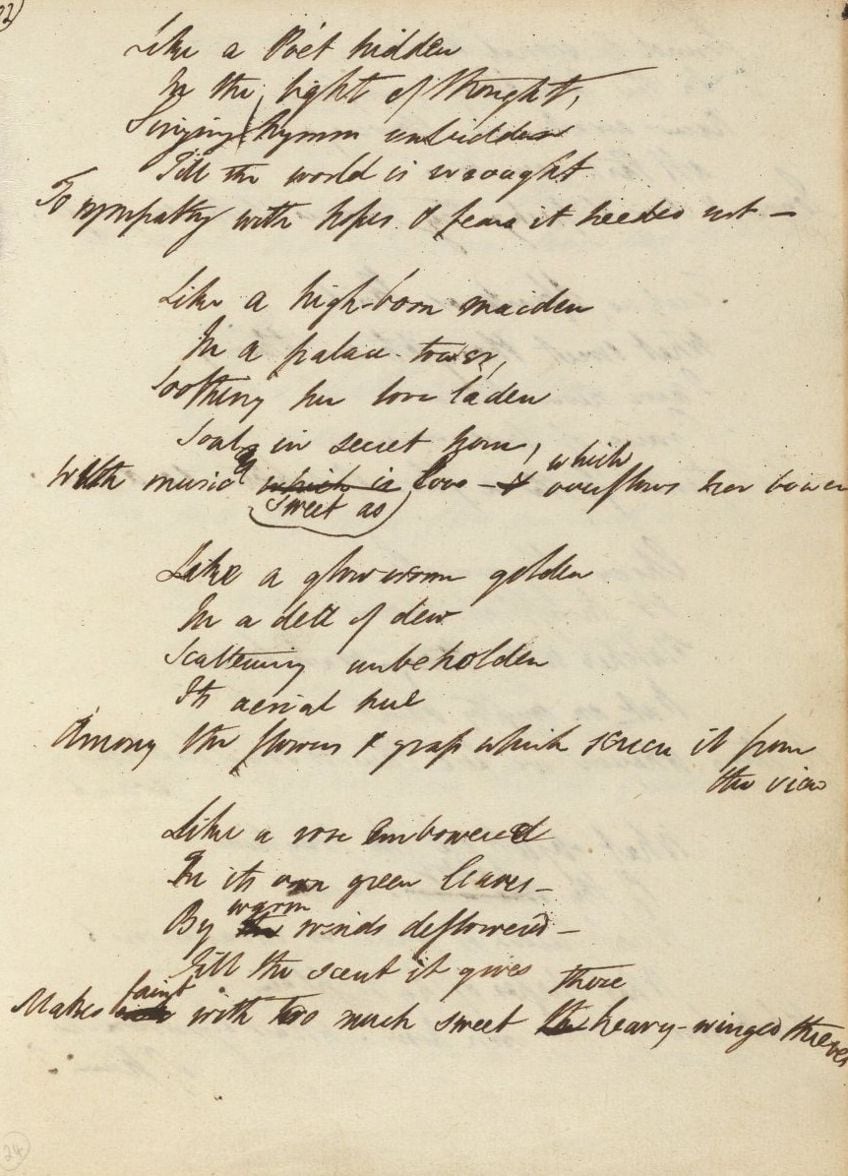
This poem has remained one of the most stunning examples of Romantic poetry and an important one in the revival of ode poetry that could be found during the Romantic era. It has a more musical quality to it and attempts to emulate the skylark in some ways with the way that it is phrased and arranged.
And with these final words, we come to the end. We have discussed a number of different aspects of ode poetry in an attempt to ultimately answer the question: “What is an ode poem?”. We have looked at the history of the form, some of the different types, some common ode characteristics, a few poets who made use of ode poetry, and a handful of ode poem examples. Hopefully, this has been an enlightening discussion about ode poetry, and there are many ode poems worth a read from the poets who have been listed in this article and beyond.
Frequently Asked Questions
What Is an Ode Poem?
An ode poem is a poem that, in some way, serves as a celebration or praise of something. That something can, theoretically, be anything. It can be in praise of a person, thing, place, event, and so on. The central aspect of an ode that makes it an ode is that it is meant to be positive and celebratory in tone.
Where Did Ode Poetry Originate?
The earliest ode poems could be found in ancient Greece. These early odes were set to music, and they were accompanied by dance routines that formed part of the poem as a whole. However, the more musical and performance-oriented aspects of ode poetry have since fallen away, but the general tone of the ode has remained into the present day even when a poet does not use the term ode to describe what they have written.
What Are Some Common Ode Characteristics?
The primary distinguishing characteristic of the ode poem is that it is written as a celebration or in praise of something. That something can be anything, such as a person, object, or event. Many ode poems make use of a continuous structure, but there is no formalized ode poem structure that they all follow. Instead, most ode poems tend to use a structure that they then follow throughout the duration of the ode poem.
Who Are the Most Famous Ode Poets?
There have been numerous ode poets over the centuries, and while many of those have been in ancient times, some of the best-remembered in the English language arose during the Romantic movement. This has meant that figures such as William Wordsworth, Samuel Taylor Coleridge, Percy Bysshe Shelley, John Keats, and others are some of the best-remembered writers of ode poetry.
What Are the Most Famous Ode Poem Examples?
There are a number of famous ode poem examples. For instance, there are a number of Romantic poems that are considered to be some of the most famous instances of this form. Some of these include Dejection: An Ode (1802) by Samuel Taylor Coleridge, Ode on a Grecian Urn (1819) by John Keats, and To a Skylark (1820) by Percy Bysshe Shelley.
Justin van Huyssteen is a freelance writer, novelist, and academic originally from Cape Town, South Africa. At present, he has a bachelor’s degree in English and literary theory and an honor’s degree in literary theory. He is currently working towards his master’s degree in literary theory with a focus on animal studies, critical theory, and semiotics within literature. As a novelist and freelancer, he often writes under the pen name L.C. Lupus.
Justin’s preferred literary movements include modern and postmodern literature with literary fiction and genre fiction like sci-fi, post-apocalyptic, and horror being of particular interest. His academia extends to his interest in prose and narratology. He enjoys analyzing a variety of mediums through a literary lens, such as graphic novels, film, and video games.
Justin is working for artincontext.org as an author and content writer since 2022. He is responsible for all blog posts about architecture, literature and poetry.
Learn more about Justin van Huyssteen and the Art in Context Team.
Cite this Article
Justin, van Huyssteen, “What Is an Ode Poem? – An In-Depth Look at the Ode Form.” Art in Context. September 14, 2023. URL: https://artincontext.org/what-is-an-ode-poem/
van Huyssteen, J. (2023, 14 September). What Is an Ode Poem? – An In-Depth Look at the Ode Form. Art in Context. https://artincontext.org/what-is-an-ode-poem/
van Huyssteen, Justin. “What Is an Ode Poem? – An In-Depth Look at the Ode Form.” Art in Context, September 14, 2023. https://artincontext.org/what-is-an-ode-poem/.


